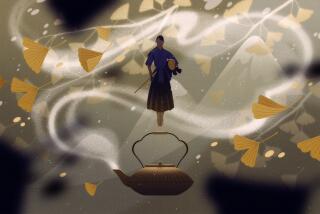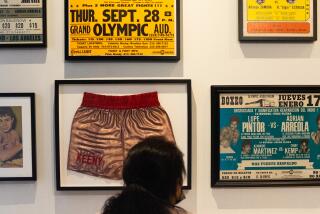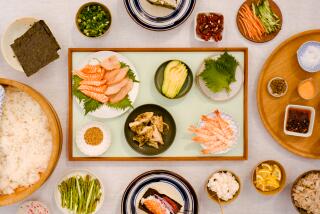Get Ready To Sumo
- Share via
“One of the things I like about sumo is the initial clash,” says Harry Dudrow. “I’ll be 58 in July, and I still like to go out there and butt heads.”
While watching a Japanese-language show on cable five years ago, the former high school football coach stumbled across “Sumo Digest” and became hooked by the 2,000-year-old sport, steeped in myth and tradition. After attending last year’s North American Amateur Sumo Wrestling Championships at the Hollywood Park Casino, he and some like-minded sumo fans started the Southern California Sumo Assn. The men built their own dohyo (the raised clay sumo ring) in a member’s Garden Grove backyard, where they wrestle and train. They also organize sumo events, such as a kids competition recently held in Claremont.
Dudrow teaches himself techniques by studying tapes of Japanese matches and coaches other members of the group. He’ll be watching one of his proteges, Joe Butler, compete in next weekend’s second annual championships at the Hollywood Park Casino.
Sumo, once popular among local Japanese Americans, virtually disappeared in Southern California after World War II (internees held some matches in the camps during the war). “One of the most difficult things I’m working on right now is getting Japanese Americans interested in doing sumo again,” says Dudrow, who has one student, a 10-year-old, who’s Japanese. The sport itself is in transition. The international governing body would like to see it become an Olympic event, thus the inclusion of different weight classes at amateur events (multiple weight classes are an Olympic requirement) and the wearing of shorts under the mawashi, the signature--and revealing--loincloths.
Despite the changes, Dudrow’s group still embraces sumo’s traditional aspects. “When we built the dohyo, we buried an earthen jar of things like seaweed, rice and sake,” he explains. “They’re symbolic items buried in the hole by a referee acting as a Shinto priest, because sumo originated as a harvest festival in ancient Japan and basically was done, I think, once a year.
“We don’t want amateur sumo to become sumo for the sake of wrestling, without any of the tradition,” Dudrow says.
More to Read
Go beyond the scoreboard
Get the latest on L.A.'s teams in the daily Sports Report newsletter.
You may occasionally receive promotional content from the Los Angeles Times.










